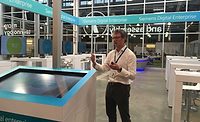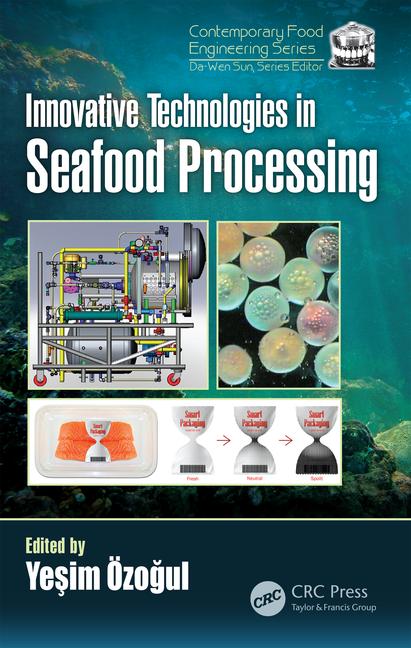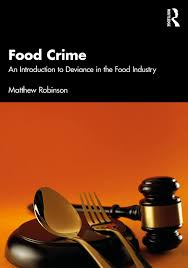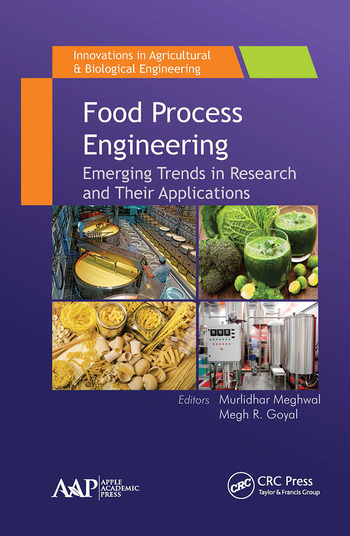Green Series
Reducing water usage in food and beverage processing
For decades, water was seen as a free commodity in processing environments, but attitudes are starting to change due to increasing drought conditions and recent water pollution crises.

The Veolia Water Technologies Neosep process combines a biological treatment with membrane filtration to reduce sludge production and create a high-quality effluent for recycle or reuse. Source: Veolia Water Technologies.

GE BEV reverse osmosis systems provide beverage processors with high-quality ingredient water for their products. Source: GE.

GE membrane bioreactors (MBRs) treat wastewater streams to meet effluent regulations for food and beverage processors. Source: GE.

U.S. Water Services, Inc. research and development scientists are creating new, sustainable technologies for water use reduction and purity. Source: U.S. Water Services, Inc.




At the beginning of 2016, the world learned about the elevated lead levels in Flint, MI’s drinking water. Details emerged that the local government changed the city’s water supply from the Detroit system to the Flint River in an attempt to save money, a move that produced disastrous results.
Beyond illuminating a horrifying social and political situation, this crisis underscores the importance of access to quality water. In fact, many recent reports deem the impact from water shortages, flooding or droughts as the number one threat to businesses in the foreseeable future.
“Increased demands are being placed on fresh water supplies in almost every geographic location,” says Blake Schomas, a Nalco water expert for the food and beverage industry. Nalco, an Ecolab company, offers water, energy and air improvement solutions and services for industrial and institutional markets. “As a result, food and beverage manufacturers are increasingly in the position of having to compete with local populations for access to fresh water,” Shomas states.
Understanding water risks
According to the United Nations, approximately one-fifth of the world’s population lives in water-scarce areas; another one-quarter face a water shortage. With numbers like these, the importance of water as a commodity becomes clear.
“Water is a finite resource that needs to be sustained for future generations,” states Rick Schreiber, national leader of BDO's manufacturing and distribution practice. “As the population grows, resources [such as water] become more constrained.”
Consequently, costs associated with the consumption and discharge of water are forecasted to rise, according to Chris Harvey, director of business development for Veolia Water Technologies. In some areas where water shortages are experienced, the costs could skyrocket, creating a financial risk for companies that do not implement water conservation measures.
“Water is an essential input for the food and beverage industry,” notes Daniel Scott, process engineer at ADI Systems, Inc., which offers industrial wastewater treatment solutions. “Conservation and reuse measures reduce exposure to rising rates and supply shortages.”
To evaluate the cost of water, looking at energy costs is also important. This is known as the energy/water nexus, which states that reduced water equals reduced energy.
“Using less water reduces the amount of wastewater treatment costs,” explains Ola Wesstrom, senior industry manager for food and beverage, Endress+Hauser USA. “It can also reduce the cost of energy used for heating or cooling water.”
Approximately one-fifth of the world’s population lives in water-scarce areas; another one-quarter face a water shortage.
Moreover, inefficient water use has the potential to damage the image of a food and beverage company. “Companies should be concerned about water conservation to ensure the ‘social license’ to operate their facility remains intact,” Harvey says. “Water is a valuable resource, and its scarcity in some regions may cause communities to scrutinize how it is being used.”
Conversely, taking steps to reduce a company’s water footprint could help build confidence in the company and strengthen its relationship with the local community, Harvey adds.
Matt Howard, director of the Alliance for Water Stewardship in North America, advises food and beverage companies looking to make water usage changes to start by understanding how water impacts their business. “How much water is used per unit of production, where is water sourced, and where and how is it discharged?” he asks. “Are there external conditions that may impact a facility such as being located on a flood plain or near sensitive wildlife areas? Are there primary inputs that have water risks associated with them?” Howard says by understanding the local water context and issues that might arise, companies can begin developing a plan of action to mitigate potential risks and optimize water usage.
“Operational planning to accommodate demands on production and resources can result in improved asset protection, product quality assurance and the ability to maintain or even increase production rates,” offers Nalco’s Schomas.
Evaluating water use and inefficiencies
To evaluate water usage, looking at likely suspects is a good place to begin. A recent white paper from Haskell, a design/build firm, identifies three areas that consume the biggest amounts of water in food and beverage processing plants: clean in place (CIP) and heat exchanges such as in cooling towers account for 66 percent of all non-product water used in plants, while the remaining one-third is split between manual cleaning, sanitation and miscellaneous utility demands.
For individual plant analysis, Rick Molongoski, vice president, food and beverage sector for CDM Smith engineering and construction firm, suggests developing a “water balance,” identifying all process and utility water uses and discharges, including water in product, evaporation and sewer discharge.
“Every facility should start by observing water consumption when no cleaning or production is taking place,” advises Schomas. “Working with a water expert can result in identifying reduction opportunities ranging from 5 to 30 percent of total plant water consumption.”
Schomas says some of the biggest missed water savings opportunities are related to not securing water systems when production equipment is not in service, such as water used for cooling, flushing, rinsing, etc. “Other culprits include manual hoses stuffed into drains and left, and once-through cooling systems not identified, monitored or understood,” he continues. “Additionally, some facilities, either due to age or lack of emphasis, have an inordinate number of leaks.”
In its auditing process, Nalco takes a total plant approach—meaning total water in and total water out from beginning to end in operations. This approach allows for economically justified recommendations to optimize the individual systems in the plant, as well as repurposing recommendations between systems, which Schomas says are normally unrelated.
Best practices
Monitoring water consumption requires a proper assessment of the water footprint. “We see a lot of facilities with water meters where the information is not being collected and evaluated for corrective action,” Schomas says. “Monitoring not only provides the current state, it also can be used to [maintain] improvement gains and identify when a specific system is out of compliance.”
He suggests that instead of measuring the “entire ocean” of consumption, a facility should monitor water use on a targeted basis by first identifying the 10 areas that consume the most water and then setting performance goals.
Veolia’s Harvey believes implementing a short interval control (SIC) process specific to water usage is a must. “By installing monitoring systems, manufacturers can monitor water usage in almost real time, set short- and long-term goals, and make adjustments as needed,” he says.
Some of these plant adjustments could come from installing automatic shutoff or low-flow nozzles, observes Nate Bach, U.S. Water Services, Inc. vice president of engineering and equipment.
“Mid-sized and smaller companies should consider measuring water usage between work shifts, installing flow meters or leak detection systems, and adding spring valves to hoses,” BDO’s Schreiber advises.
As in any sustainability activity, changing the company’s culture is an important component. Nalco’s Schomas says this can be accomplished by setting goals and standards for employees on the floor, as well as using water use ratios (WUR) as a report card.
“Changing culture is an ongoing process and commitment that needs to be supported by a continuing focus on setting goals and standards,” Schomas says. “Goals should be communicated at all levels, and plant employees should be empowered to report water reduction ideas and take action.”
Schreiber supports using a Six Sigma methodology, such as a Kaizen event, to bring operators and managers together to review an existing process and identify areas for improvement.
According to Bach, “The facility can educate employees with best practices training—such as not using a hose as a broom for solids recovery—and develop process improvement teams to create employee commitment.”
While these steps may lead to reducing water usage on the production floor, they do not address water reuse. And, the failure to reuse wastewater streams is the biggest area of inefficient water use GE Water sees when auditing companies, says Michael McDonald, GE Water senior sales manager. “If treated properly, these wastewater streams can be reused within food and beverage plants to increase efficiency while reducing costs,” he says.
GE Water works with companies to identify opportunities to increase wastewater reuse, reduce water draws from the source and meet discharge restrictions. Some of the areas evaluated for improvement are utility water, process water and ingredient water.
“Once water crosses the boundary of a floor drain, it cannot be used in certain reintroduction applications,” cautions McDonald. “But, it can be cleaned with the best available technology solutions and reused as utility water.”
When food and beverage companies are so dependent on water for their manufacturing processes and equipment that they cannot effectively reduce their consumption, Veolia’s Harvey recommends evaluating wastewater streams for financial, social and environmental benefits that warrant investment in technologies that allow reusing water, recovering nutrients or producing biogas.
“Several affordable wastewater systems have a small footprint, and can be scaled up as needed,” he notes. “These systems allow companies to initiate water reuse programs on a smaller scale and prove the business case for larger water reuse initiatives.”
Technologies and equipment
Cleaning processes account for as much as 60 percent of a food or beverage plant’s total water consumption, says Schomas. “Water is used for cleaning in place, cleaning out of place, cleaning floors and exterior equipment, and lubricating and cleaning conveyors,” he says. Nalco suggests practices that replace water, such as physically cleaning with vacuum systems and using push systems instead of water brooms or high-pressure hoses that push debris into drains.
Haskell recommends using dry ice for manually washed equipment, such as a tank or kettle, since it evaporates into a gas that cleans the equipment without moisture.
Clean-in-place systems do not require time-consuming teardowns and rebuilds of equipment. However, CIP systems consume higher amounts of water and energy. Thus, optimizing them can make a big difference in reducing water usage.
Some CIP design practices Haskell endorses are locating the systems central to the cleaning loads to reduce pipe runs, having the correct pipe sizes to minimize the volume of water required and investing in a product recover system, such as pig or air blows.
Upgrading the technology used in a CIP system also could potentially save money and water. “By converting older timing-based CIP systems to concentration and timing based on water and detergent usage can optimize CIP significantly,” says Endress+Hauser’s Wesstrom.
U.S. Water Services, Inc.’s Bach says retrofitting CIP systems can be done easily to collect final rinse water and reuse it for the first rinse or flush before the next batch of cleaner or sanitizer is applied. “Many juice plants have fruit rinse operations with multiple stages,” he explains. “In many cases, the second stage could be reused during the first stage with minimal treatment.”
More extensive measures to reuse water require cost-effective technological solutions. Veolia’s Harvey says installing a comprehensive water and wastewater system can close the water cycle as much as possible and might also be able to produce valuable byproducts, such as biofuels or nitrogen-/phosphorous-rich fertilizers. “Depending on the wastewater stream, these systems can include one or more technologies, including anaerobic digesters, aerobic systems, reverse osmosis [RO] systems, membrane filtration systems, disc filters and clarifiers,” he says.
One area where these systems can be employed is in cooling towers. As the cooling towers work and water evaporates, left behind in the remaining water are a number of particles from the air and an increasingly concentrated amount of minerals, salts or ions. Haskell’s white paper suggests employing filtration technology to stretch cooling tower water so it can be reused in 10 passes through the cooling system, reducing the need for new water. Some of the recommended basic cooling tower design features include disc filtration for particulate reduction; jet nozzles for basin agitation to prevent particle settlement; precipitation softening, also known as cold lime softening; and reverse osmosis.
Other advanced wastewater treatment technologies, such as membrane bioreactor (MBR) systems, filter water by rejecting the solid materials to produce a clarified, disinfected product effluent. “PepsiCo Frito-Lay’s snack manufacturing facility in Casa Grande implemented this approach and, as a result, won a US Water Prize from the Clean Water America Alliance for its ‘near net-zero’ waste discharge facility,” says BDO’s Schreiber.
Benefits
The cost benefits of water reduction are evident. “Water conservation can create bottom-line savings,” says Schreiber. “For example, The Equity Group chicken nugget processing plant in North Carolina cut its water use by 30 percent. It also saves $100,000 annually by reviewing its water use and switching to less water-intensive procedures.”
Schomas says during a typical plant audit, Nalco uncovers, on average, $1 million in potential savings by reducing water and energy and improving effluent operations. However, the benefits don’t stop there.
“More and more manufacturing operations are either facing water restrictions, mandatory water reductions or the threat or fear one of these things may become a reality,” Schomas remarks. “If a facility does not improve its water consumed per production output and has to curtail water usage, it will have to reduce production.” And, a production limit imposed by a water usage restriction could potentially put a profitable, growth-based operation at risk of becoming an unprofitable location overnight, he cautions.
For more information:
Rick Schreiber, BDO USA, 212-885-8000,
rschreiber@bdo.com, www.bdo.com
Chris Harvey, Veolia Water Technologies, 800-337-0777,
chris.harvey@veolia.com, www.veoliawaterstna.com
Daniel Scott, ADI Systems Inc., 800-561-2831,
systems@adi.ca, www.adisystemsinc.com
Michael McDonald, GE Water, 215-355-3300,
custhelp@ge.com, www.gewater.com
Matt Howard, Alliance for Water Stewardship-North America, 414-988-8749,
mhoward@thewatercouncil.com, www.awsnorthamerica.com
Rick Molongoski, CDM Smith, 518-782-4505,
molongoskira@cdmsmith.com, www.cdmsmith.com/industry
Nancy Limberg-Meyer, Nalco, an Ecolab Company, 630-305-2478,
nlimberg@nalco.com, www.nalco.com
Samira Bowles, Haskell, 904-791-4500,
info@haskell.com, www.haskell.com
Ola Wesstrom, Endress+Hauser USA, 800-642-8737,
info@us.endress.com, www.us.endress.com
Nate Bach, U.S. Water Services, Inc., 866-663-7633,
info@uswaterservices.com, www.uswaterservices.com
Looking for a reprint of this article?
From high-res PDFs to custom plaques, order your copy today!













